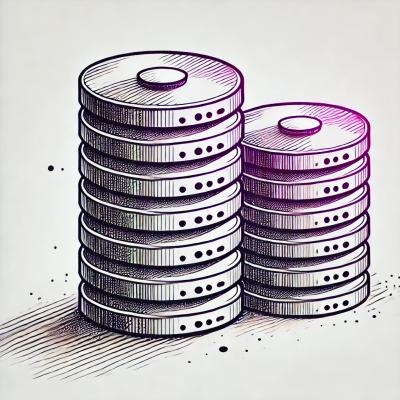
Security News
MCP Community Begins Work on Official MCP Metaregistry
The MCP community is launching an official registry to standardize AI tool discovery and let agents dynamically find and install MCP servers.
jsonobject-couchdbkit
Advanced tools
jsonobject-couchdbkit_ is a fork of couchdbkit that replaces couchdbkit.schema
with a thin wrapper around jsonobject
(which was, incidentally, written as a way faster replacement
for couchdbkit.schema.) See jsonobject_.
Couchdbkit_ provides you a full featured and easy client to access and
manage CouchDB. It allows you to manage a CouchDBserver, databases, doc
managements and view access. All objects mostly reflect python objects for
convenience. Server and Databases objects could be used for example as easy
as using a dict.
.. image:: https://secure.travis-ci.org/benoitc/couchdbkit.png?branch=master :alt: Build Status :target: https://secure.travis-ci.org/benoitc/couchdbkit
Couchdbkit requires Python 2.x superior to 2.6.
To install couchdbkit using pip you must make sure you have a recent version of distribute installed::
$ curl -O http://python-distribute.org/distribute_setup.py
$ sudo python distribute_setup.py
$ easy_install pip
To install or upgrade to the latest released version of couchdbkit::
$ pip install couchdbkit
This tutorial exposes key features of this library mainly through code
examples. For in-depth description of the modules, you'll want to read
the API_ documentation.
Write your first CouchDB document +++++++++++++++++++++++++++++++++
::
from couchdbkit import Server
server = Server()
db = server.get_or_create_db("greeting")
doc = {"mydoc": "test"} db.save_doc(doc)
::
import datetime from couchdbkit import *
class Greeting(Document): author = StringProperty() content = StringProperty() date = DateTimeProperty()
Store the submitted Greetings +++++++++++++++++++++++++++++
Here is the code to save a greet on Greeting database. We also see how to create a database::
from couchdbkit import Server
Greeting.set_db(db)
greet = Greeting( author="Benoit", content="Welcome to couchdbkit world", date=datetime.datetime.utcnow() )
greet.save()
.. NOTE::
You can just use the db object to save a Schema: db.save(greet) .
Your document greet is now in the greetings db. Each document
is saved with a doc_type field that allow you to find easily each
kind of document with the views. By default doc_type is the name of
the class.
Now that you saved your document, you can update it::
greet.author = u"Benoit Chesneau" greet.save()
Here we updated the author name.
Dynamic properties ++++++++++++++++++
Mmm ok, but isn't CouchDB storing documents schema less? Do you want to add a property ? Easy::
greet.homepage = "http://www.e-engura.org" greet.save()
Now you have just added an homepage property to the document.
Get all greetings +++++++++++++++++
You first have to create a view and save it in the db. We will call it
greeting/all. To do this we will use the loader system of couchdbkit
that allows you to send views to CouchDB.
Let's create a folder that contains the design doc, and then the folder for the view. On unix::
mkdir -p ~/Work/couchdbkit/example/_design/greeting/views/all
In this folder we edit a file map.js::
function(doc) { if (doc.doc_type == "Greeting") emit(doc._id, doc); } }
Here is a folder structure::
/Work/couchdbkit/example/:
--_design/ ---- greetings ------ view
Here is a screenshot:
.. image:: http://couchdbkit.org/images/gettingstarted.png
A system will be provided to manage view creation and other things. As
some noticed, this system works like couchapp_ and is fully
compatible.
Then we use push function to send the design document to CouchDB::
from couchdbkit.designer import push push('/path/to/example/_design/greetings', db)
The design doc is now in the greetings database and you can get all
greets::
greets = Greeting.view('greeting/all')
.. _jsonobject-couchdbkit: https://github.com/dimagi/couchdbkit/tree/jsonobject .. _jsonobject: http://github.com/dimagi/jsonobject .. _Couchdbkit: http://couchdbkit.org .. _API: http://couchdbkit.org/doc/api/ .. _couchapp: http://github.com/couchapp/couchapp/tree/
FAQs
Python couchdb kit
We found that jsonobject-couchdbkit demonstrated a healthy version release cadence and project activity because the last version was released less than a year ago. It has 2 open source maintainers collaborating on the project.
Did you know?

Socket for GitHub automatically highlights issues in each pull request and monitors the health of all your open source dependencies. Discover the contents of your packages and block harmful activity before you install or update your dependencies.

Security News
The MCP community is launching an official registry to standardize AI tool discovery and let agents dynamically find and install MCP servers.

Research
Security News
Socket uncovers an npm Trojan stealing crypto wallets and BullX credentials via obfuscated code and Telegram exfiltration.

Research
Security News
Malicious npm packages posing as developer tools target macOS Cursor IDE users, stealing credentials and modifying files to gain persistent backdoor access.